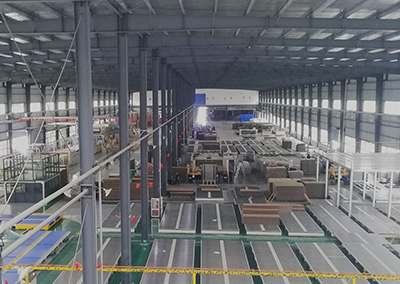Sep. 08, 2023
How to reduce the cost of corrugated boxes?
Reducing the cost of corrugated boxes during manufacturing can be achieved through various strategies aimed at optimizing materials, processes, and efficiency. Here are some effective ways to reduce cost in corrugated box manufacturing:
1. Material optimization: Efficiently managing raw materials is crucial for cost reduction. Consider using lightweight and cost-effective materials without compromising strength or durability. Evaluate different types of corrugated boards and liners to find the optimal combination that meets the required specifications while minimizing costs.
2. Standardize box sizes: Standardizing box sizes can lead to cost savings in several ways. It allows for better utilization of materials, reduces setup times for machinery, and optimizes storage and transportation space. By focusing on a limited range of standard box sizes, you can streamline manufacturing processes and reduce waste.
3. Lean manufacturing principles: Implement lean manufacturing principles to eliminate waste and increase efficiency. This involves identifying and eliminating non-value-added activities such as excess motion, waiting times, overproduction, and unnecessary handling. By optimizing processes, you can reduce labor requirements, machine downtime, and material waste, resulting in cost savings.
4. Automation and technology: Introduce intra-logistics conveyors and systems to improve production efficiency and reduce labor costs. Use prefeeder and pre-loader machines for flexo folding gluing printers. Additionally, implementing advanced manufacturing systems and software solutions can optimize production planning, inventory management, and order processing.
5. Supplier partnerships: Establish strong relationships with reliable and cost-effective suppliers. Negotiate better pricing and volume discounts by consolidating your purchasing requirements with a select few suppliers. This can help reduce material costs and ensure a steady supply chain.
6. Energy efficiency: Focus on energy efficiency measures to reduce operational costs. This includes optimizing machine settings, maintaining equipment properly, and implementing energy-saving technologies. By reducing energy consumption, you can lower utility bills and improve overall cost-effectiveness.
7. Waste reduction and recycling: Implement waste reduction strategies to minimize material waste. Recycle and reuse corrugated scrap and excess materials wherever possible. Implement waste sorting and recycling programs to ensure that waste materials are properly managed and repurposed, reducing disposal costs.
8. Continuous improvement: Encourage a culture of continuous improvement by involving employees in identifying cost-saving opportunities. Regularly evaluate processes, gather employee input, and implement their suggestions. Small incremental improvements, when implemented consistently, can lead to significant cost reductions over time.
9. Remember that cost reduction efforts should never compromise product quality or customer satisfaction. Strive to strike a balance between costs and value to provide a cost-effective solution without sacrificing product integrity or performance.
